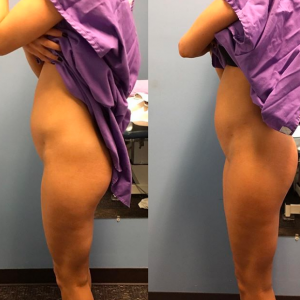Treating abdominal phrenic dyssynergia successfully: this patient has slowed digestive motility and mobility, and a distended abdominopelvic region. Both of her diaphragms (respiratory and pelvic) were restricted in mobility and discoordinated. We utilize manual therapies, pelvic floor rehab, visceral manipulation, sEMG biofeedback, intestinal massage, dietary discussions, Thiele’s massage, MFR, and a home exercise program (HEP). The HEP consists of many visceral and pelvic floor exercises. Important aspects of rehab for APD are: improving the mechanics of breathing, balancing the pelvic and respiratory diaphragms, phrenic nerve neural tension release, thoracic spine mobilization, lumbar spine mobilization, and cervical spine C3-5 mobilization. Gaining optimal lumbar and pelvic alignments are included as well. Cranial nerves may also be included as part of a craniosacral therapy approach. Lastly, the vagus nerve is assessed and released. Optimal digestive return of function, resolving constipation, and improving core strength are important goals.




